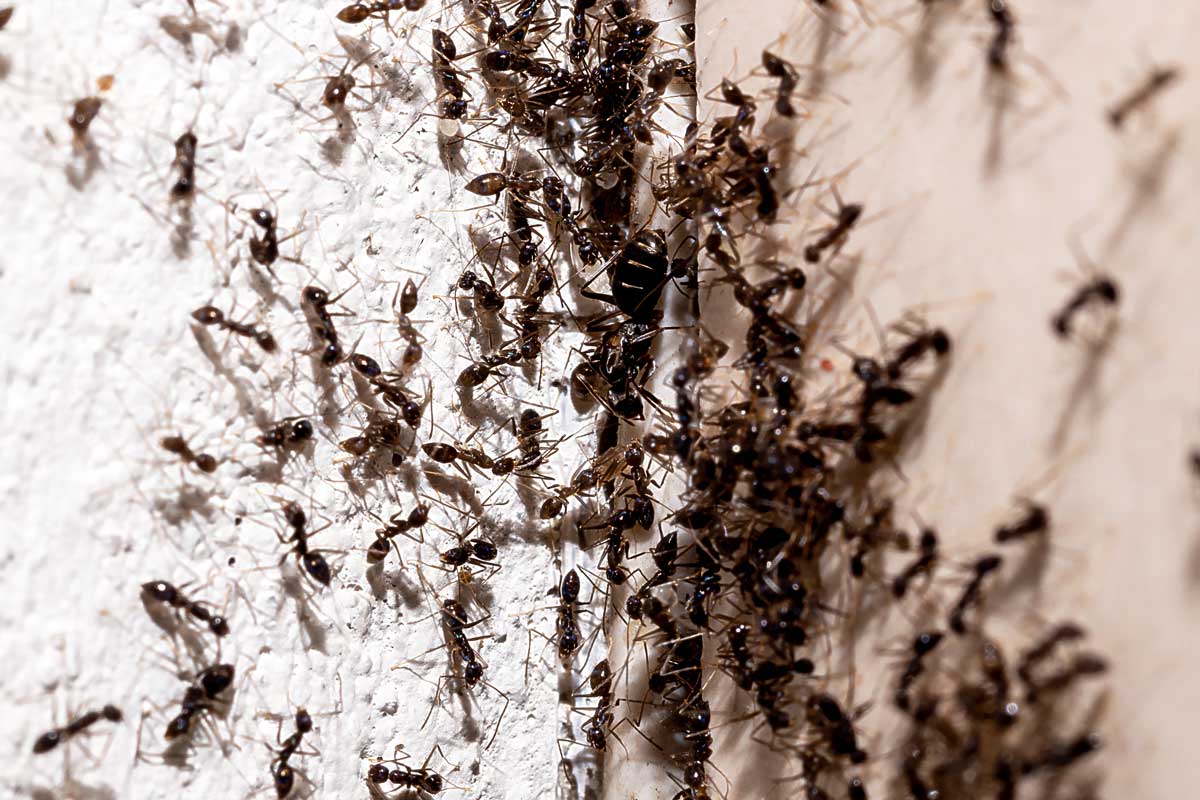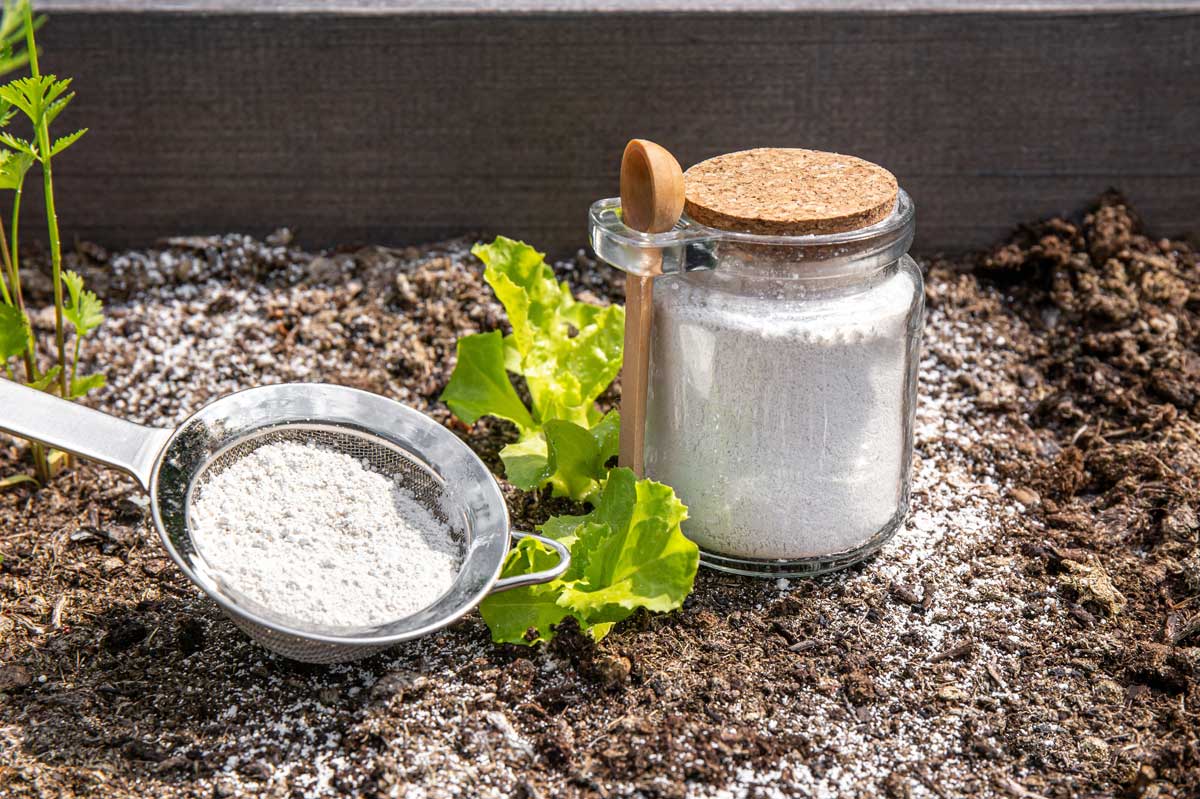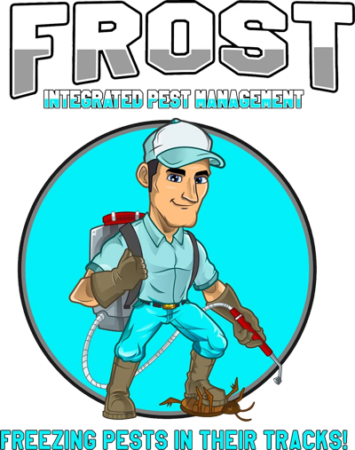
Running a restaurant or food service establishment requires not just culinary expertise and a welcoming atmosphere, but also the maintenance of a clean and hygienic environment. Unfortunately, pests such as ants can present significant challenges, particularly in kitchens and dining areas. Ant infestations are a common issue in restaurants, and without proper control, they can negatively impact both the reputation of the establishment and food safety standards. Understanding how to deal with ant infestations and prevent them from recurring is essential for keeping your kitchen running smoothly and ensuring the safety of your customers. This guide outlines the steps involved in ant control in restaurants, from identification to prevention strategies.
Identifying Ant Problems in Commercial Kitchens
Ants are more than just a nuisance—they can pose serious threats to the hygiene and safety of food service establishments. In commercial kitchens, where cleanliness is paramount, ants can contaminate food items and work surfaces, potentially leading to foodborne illnesses. The first step in ant control in restaurants is identifying the source of the problem. Ants are known for their ability to invade a wide range of environments, and kitchens, with their abundance of food sources, are particularly attractive to them. They often enter through cracks and crevices in walls, floors, windows, or doors. Once they find a steady food source, ants will leave a trail of pheromones to guide other ants to the food. This can quickly lead to a larger infestation if not addressed promptly.
Signs of an ant infestation can range from seeing ants scurrying around food prep areas to noticing tiny piles of dirt or droppings in hidden corners. Additionally, food containers may be chewed through, or food may become contaminated with the presence of ants. It’s important for restaurant owners and staff to regularly inspect the premises for any signs of ant activity, especially in storage areas, behind appliances, and along the edges of walls or counters where ants tend to travel.
Understanding the Risk to Food Safety
In a food service environment, food safety is a top priority. Ants, while not typically known to transmit diseases directly, can still carry pathogens on their bodies and contaminate food and surfaces. When ants move through various environments, they may pick up bacteria, fungi, and other microorganisms, transferring them onto your food or kitchen surfaces. An ant infestation can thus lead to the contamination of prepared foods, raw ingredients, and food storage areas. In worst-case scenarios, this can result in customer illness, regulatory fines, or even the closure of your establishment.
The presence of ants in your kitchen can also damage the reputation of your restaurant. Customers expect a clean, safe environment when dining out, and spotting ants in a restaurant can leave a lasting negative impression. Therefore, it’s crucial to not only address the infestation but also ensure that the underlying conditions leading to the problem are eliminated. Ant control in restaurants must be a priority to maintain a safe and welcoming environment for patrons and staff alike.
Tips for Preventing Ants in Commercial Kitchens
Prevention is always the best approach when dealing with pests. In restaurants, it is essential to implement measures that make it difficult for ants to invade and thrive. Regular cleanliness is the foundation of any successful pest control strategy. Keeping all food preparation areas, storage spaces, and dining areas clean and free of crumbs or spills will reduce the likelihood of attracting ants. Ensure that food is stored in airtight containers, and regularly inspect pantry and storage areas for signs of pests.
Another important step is to seal up any entry points. Ants can slip through even the tiniest cracks and gaps. Regularly check for and repair any damage to the structure, especially around windows, doors, and plumbing lines. Installing door sweeps and window screens can help prevent ants from entering the building, especially during warmer months when they are most active. It’s also important to keep outdoor areas free from debris and food waste, as this can serve as a source of attraction for ants looking to enter the restaurant.
In addition to maintaining a clean environment, using natural deterrents can help keep ants away. Some restaurant owners opt for essential oils such as peppermint, citrus, or cinnamon, which ants find unpleasant. Spraying diluted solutions of these oils in areas where ants are likely to enter can be an effective way to deter them. Similarly, diatomaceous earth can be sprinkled around the perimeter of the building to create a barrier that ants will avoid. Though these methods are not foolproof, they can act as part of a larger pest management strategy that includes regular inspections and professional pest control services.
Professional Ant Control Services for Restaurants
When an ant infestation becomes overwhelming or difficult to manage internally, it’s time to call in the professionals. Pest control experts specialize in identifying, managing, and preventing infestations, offering a level of expertise that is often needed in a commercial setting. Professional pest control companies use a combination of inspection, treatment, and preventative strategies to eliminate ants and prevent future invasions.
For restaurants, pest control services will conduct a thorough inspection of the premises, identifying the species of ant, locating their nests, and determining how they are entering the building. After this assessment, the experts will develop a customized plan to deal with the infestation, which may include the use of baiting systems, traps, or targeted insecticides. These methods are often more effective than over-the-counter products and are safer for use in food environments. Moreover, pest control professionals will be able to offer advice on long-term prevention, including regular maintenance schedules and proactive monitoring.
It’s important to note that many pest control companies specialize in sustainable, eco-friendly treatments, which are crucial in food service environments where health regulations must be strictly followed. Using eco-friendly pest control options can reduce the potential risks to both the environment and the food being prepared, offering peace of mind to restaurant owners and customers alike.
Maintaining Long-Term Ant Prevention in Restaurants
Once an ant infestation has been managed or eliminated, the focus should shift to long-term prevention. To prevent future infestations, it’s important to implement ongoing strategies for keeping ants at bay. A comprehensive pest management plan should include regular inspections by staff to look for signs of ants and other pests. Staff should be trained to spot the early warning signs of an infestation, allowing the issue to be addressed before it grows out of control.
Routine cleaning should also be a non-negotiable part of the restaurant’s daily operations. All food scraps, waste, and debris should be promptly cleaned up, and regular deep cleaning of storage areas, prep stations, and behind kitchen equipment will help keep ants away. Ensuring that food storage areas are properly sealed and tightly organized will also make it less likely that ants will find their way into your kitchen.
Another key element of long-term prevention is the establishment of a relationship with a pest control service provider. Many pest control companies offer ongoing maintenance programs, where they regularly monitor your restaurant for potential pest problems. These programs can ensure that any new infestations are detected and dealt with promptly, helping to safeguard your restaurant against ants and other pests for the long term. By working with experts in pest control, you’ll be able to maintain a pest-free environment and avoid the costly disruptions that infestations can cause.
In conclusion, dealing with ant infestations in restaurants and food service establishments requires a proactive, multi-step approach. By identifying the problem early, maintaining cleanliness, and enlisting the help of professionals when necessary, restaurant owners can minimize the impact of ants on their operations. Prevention is key, and with the right strategies in place, you can keep your kitchen ant-free and ensure a safe, clean environment for both staff and customers.

When pests invade your home, they can cause significant damage to your property and pose health risks to you and your family. While many people rely on chemical-based pest control methods, these often come with side effects that can harm the environment and your health. Fortunately, there are numerous natural pest control solutions that can be just as effective in keeping your home pest-free without resorting to harsh chemicals. In this blog post, we will explore the top 10 natural pest control methods that can help you keep your home safe and pest-free.
The Benefits of Natural Pest Control
Natural pest control solutions are becoming increasingly popular for homeowners who are looking for eco-friendly and safe alternatives to traditional chemical pesticides. One of the biggest advantages of using natural pest control methods is that they are often non-toxic to humans, pets, and beneficial insects. Chemical pesticides, on the other hand, can leave harmful residues behind and may even contribute to health issues such as respiratory problems, allergies, or skin irritations. By opting for natural pest control methods, you can reduce the risk of exposure to these harmful chemicals while still effectively managing pest problems.
Another key benefit of using natural pest control solutions is their minimal impact on the environment. Many chemical pesticides can contaminate soil and water, harming local wildlife and polluting ecosystems. By choosing natural methods, you can help protect your surrounding environment and contribute to sustainability efforts.
Essential Oils for Pest Control
Essential oils have long been used for their medicinal and aromatic properties, but they also make excellent natural pest control solutions. Certain essential oils contain compounds that act as natural repellents for various pests, such as ants, mosquitoes, flies, and spiders. Some of the most effective essential oils for pest control include peppermint, citronella, eucalyptus, lavender, and tea tree oil.
To use essential oils as a pest deterrent, you can create a homemade spray by mixing a few drops of the oil with water in a spray bottle. Shake the mixture well and spray it in areas where pests are likely to enter your home, such as windowsills, doorways, and cracks in the walls. Essential oils can also be diffused into the air to repel insects and create a pleasant, pest-free atmosphere.
Diatomaceous Earth: A Natural Bug Killer
Diatomaceous earth (DE) is a naturally occurring substance made from the fossilized remains of tiny aquatic organisms called diatoms. This fine powder is highly effective at controlling pests, particularly crawling insects like ants, cockroaches, fleas, and bedbugs. When insects come into contact with diatomaceous earth, the sharp particles penetrate their exoskeletons, causing dehydration and eventually death.
The great thing about diatomaceous earth is that it is non-toxic to humans and pets. However, it is important to use food-grade diatomaceous earth, as some industrial-grade versions may contain harmful chemicals. To apply diatomaceous earth, simply sprinkle it in areas where pests are active, such as along baseboards, cracks, and entry points. It is important to wear a mask when applying diatomaceous earth to avoid inhaling the fine dust, which can be irritating to the respiratory system.
Natural Predators: Invite Beneficial Insects into Your Home
Introducing natural predators to your home is another effective way to control pests without using chemicals. Many insects and animals, such as ladybugs, praying mantises, and spiders, are natural predators of common pests like aphids, flies, and mosquitoes. By attracting these beneficial creatures to your garden or home, you can create a natural pest control system that works in harmony with the environment.
For example, ladybugs are voracious eaters of aphids and other small pests, while spiders can help control flies and mosquitoes. You can attract these natural predators by planting certain types of flowers and herbs that provide food and shelter, such as lavender, yarrow, and fennel. Additionally, you can create habitats for beneficial insects by placing a small water feature or insect hotel in your garden or near your home.
Homemade Traps for Common Pests
Homemade traps are a simple and effective way to capture and eliminate pests without resorting to harmful chemicals. Depending on the type of pest you are dealing with, there are several DIY traps you can create using common household items.
For example, to catch fruit flies, you can create a simple trap using a small jar, apple cider vinegar, and a few drops of dish soap. The vinegar attracts the flies, while the dish soap breaks the surface tension, causing them to drown. Similarly, you can create a homemade ant trap by mixing sugar and borax, which will attract ants and kill them once they consume the mixture.
For rodents like mice, you can set up a live trap using a bait such as peanut butter or sunflower seeds. Once the mouse enters the trap, it will be safely contained, allowing you to release it outside without harming it.
Cleanliness is Key to Preventing Pest Infestations
One of the most important pest control tips is maintaining a clean home. Pests, such as ants, rodents, and cockroaches, are often attracted to food sources and clutter. By keeping your home clean and free of food debris, you can reduce the likelihood of a pest infestation.
Make sure to wipe down surfaces, sweep floors, and take out the trash regularly. Store food in airtight containers to prevent attracting pests, and be sure to clean up any spills or crumbs immediately. Pay particular attention to areas that are often overlooked, such as behind appliances, inside cabinets, and under furniture. By creating an environment that is less inviting to pests, you can significantly reduce the chances of an infestation.
Vinegar: A Multi-Purpose Pest Deterrent
Vinegar is a versatile and natural product that can be used in a variety of ways to repel pests. Its strong odor is unpleasant to many insects, including ants, fruit flies, and spiders, making it an excellent natural pest control solution. Additionally, vinegar can be used as a cleaning agent to remove pheromone trails left by ants and other pests, which can help prevent them from returning.
To use vinegar as a pest deterrent, mix equal parts white vinegar and water in a spray bottle. Spray the mixture around areas where pests are active, such as windowsills, doorways, and cracks. You can also use vinegar to clean surfaces and remove any lingering odors that may attract pests.
Garlic: A Natural Pest Repellent
Garlic is another powerful natural pest control solution. Its strong odor repels a wide variety of pests, including mosquitoes, flies, and aphids. To use garlic as a repellent, you can make a homemade garlic spray by blending several garlic cloves with water and a small amount of soap. Strain the mixture and transfer it to a spray bottle, then apply it to plants, around the home, or in areas where pests are a problem.
Garlic works as both a repellent and a pesticide, making it effective against pests that are already present. It is also safe to use around pets and children, as it is non-toxic.
Citrus Peels & Other Natural Repellents
Certain fruits, like citrus, have natural properties that can deter pests. The strong scent of citrus peels, such as lemon and orange, repels insects like spiders, ants, and roaches. You can place fresh citrus peels around entry points, cracks, and corners of your home to keep pests away. Alternatively, you can boil the peels in water and strain the mixture to create a homemade pest spray.
Other natural repellents include herbs like rosemary, mint, and bay leaves, which can be placed in areas where pests tend to gather. These herbs emit strong scents that are known to repel various insects, making them an excellent addition to your pest control arsenal.
Sealing Entry Points to Prevent Pests
An often-overlooked but highly effective pest control method is sealing up any entry points that pests may use to get into your home. Inspect your home for gaps and cracks around windows, doors, pipes, and vents. Use caulk, weather-stripping, or mesh screens to seal these openings and prevent pests from entering.
In addition to sealing entry points, ensure that your home is well-maintained by fixing leaky pipes, clearing clogged gutters, and trimming vegetation around your home. Pests are often drawn to areas that provide shelter and easy access to food and water, so making your home less inviting will help keep them at bay.
Conclusion
Natural pest control solutions offer a safe, effective, and eco-friendly alternative to traditional chemical methods. By incorporating some of the top natural pest control methods into your routine, such as using essential oils, diatomaceous earth, and natural predators, you can keep your home free of pests without compromising your health or the environment. Additionally, simple strategies like maintaining cleanliness, using homemade traps, and sealing entry points can further reduce the likelihood of a pest infestation. With these pest control tips, you can enjoy a pest-free home the natural way.


